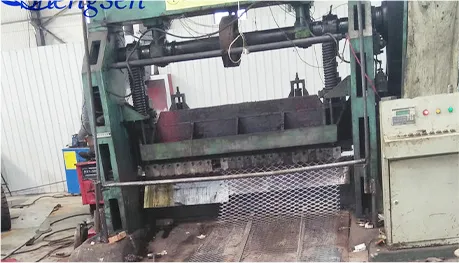-
 Phone:
Phone: -
 Email:
Email:

rock netting
The Importance of Rock Netting in Sustainable Construction
Rock netting, often referred to as rockfall netting or rockfall protection netting, plays a crucial role in ensuring safety and sustainability in construction and civil engineering projects. This innovative solution is primarily designed to prevent rockfalls and landslides in vulnerable areas, protecting both infrastructure and human lives. As urban development expands into mountainous and hilly terrains, understanding the function and benefits of rock netting becomes increasingly important.
What is Rock Netting?
Rock netting consists of a system of steel wire meshes or nets that are anchored to the ground or building structures. These nets are deployed on slopes and cliffs where loose rocks may pose a risk of falling. The primary purpose of rock netting is to catch and hold rocks that could otherwise fall onto roadways, railways, or construction sites, thereby mitigating the risk of accidents and disruptions.
The nets are designed to absorb the energy of falling rocks, distributing the impact and preventing larger debris from breaking free. In essence, rock netting serves as a protective barrier that can significantly reduce the risks associated with natural hazards.
Key Benefits of Rock Netting
The installation of rock netting provides numerous advantages, making it a popular choice in various construction projects
.1. Safety Enhancement The most obvious benefit of rock netting is the increased safety it offers. By containing loose rocks, it minimizes the potential for injury to workers and passersby, as well as property damage. This is particularly critical in high-traffic areas where rockfalls can have catastrophic outcomes.
rock netting

2. Environmental Considerations Rock netting is an environmentally friendly solution that helps stabilize slopes without requiring extensive vegetation removal. Unlike traditional methods like blasting or heavy construction, rock netting preserves the natural landscape while enhancing safety.
3. Cost-Efficiency While the initial investment in rock netting may seem substantial, the long-term savings are significant. By preventing rockfalls, it reduces the need for costly repairs and maintenance of infrastructure, thus proving to be a cost-effective solution in the long run. Additionally, it decreases the likelihood of accidents that could lead to legal liabilities.
4. Versatility in Application Rock netting can be employed in various settings, including highways, railways, and even urban developments. Its adaptability makes it suitable for different terrains, ensuring that it can meet the specific needs of a project.
5. Aesthetic Value Modern rock netting systems can be designed to blend seamlessly with natural landscapes, maintaining the visual integrity of the environment. With advancements in design, various colors and styles of netting are available, catering to the aesthetic preferences of specific projects.
Conclusion
In conclusion, rock netting is a vital component of modern construction and civil engineering, offering a blend of safety, environmental consciousness, and cost-efficiency. As communities continue to expand into areas prone to geological hazards, the importance of implementing protective measures such as rock netting cannot be overstated. Its ability to safeguard lives and infrastructure while promoting sustainable practices positions rock netting as a key player in the future of construction.
As we move forward, embracing innovative solutions like rock netting will be imperative in our quest to build resilient and eco-friendly infrastructures. By prioritizing safety through effective measures, we pave the way for a more secure and sustainable future.
-
Wire Mesh for Every Need: A Practical SolutionNewsJul.25,2025
-
Steel Fences: Durable, Secure, and Stylish OptionsNewsJul.25,2025
-
Roll Top Fencing: A Smart Solution for Safety and SecurityNewsJul.25,2025
-
Cattle Farm Fencing Solutions for Maximum SecurityNewsJul.25,2025
-
Affordable Iron Binding Wire SolutionsNewsJul.25,2025
-
Affordable Galvanized Wire SolutionsNewsJul.25,2025
-
Wire Hanger Recycling IdeasNewsJul.25,2025








